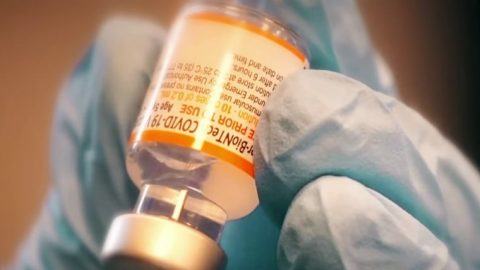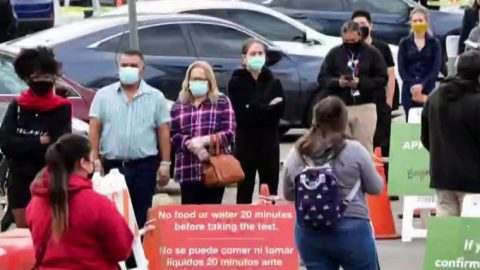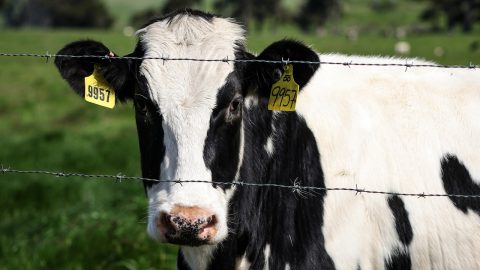A subvariant of omicron called BA.2 now accounts for nearly 35 percent of Covid-19 cases in the U.S., the Centers for Disease Control and Prevention reported Tuesday, a roughly 10 percent increase from the week before, when BA.2 was detected in 23 percent of U.S. cases.
The variant is most prevalent in the Northeast, accounting for more than 50 percent of Covid-19 cases in states like Connecticut, Maine, Massachusetts and New Hampshire.
Full coverage of the Covid-19 pandemic
But will the rise of BA.2 in the U.S. — widely anticipated after the omicron subvariant caused infection spikes in Europe over the past few weeks — have any measurable impact on the U.S. overall, particularly as Americans are just now getting back to normal routines?
Infectious disease experts remain steadfast in their prediction that the subvariant is unlikely to cause widespread severe illness or crush hospital resources as earlier variants have, even as BA.2 is estimated to be 30 percent more transmissible.
Dr. John Brooks, a medical epidemiologist and chief medical officer for the CDC’s Covid-19 response, said that while BA.2-related infections could rise, severe disease or deaths associated with the subvariant are unlikely to increase.
“Our data suggests that it’s going to keep growing,” Brooks said. “But we have a few things working in our favor,” starting with the recent omicron surge. Many people in the U.S. were infected with the omicron variant, he said, and are therefore likely to have high immunity from its subvariants, including BA.2.
“Prior infection with the original omicron appears to confer protection, not necessarily against infection but definitely against severe disease and death,” Brooks said.
Wastewater samples have also been touted as a way to monitor the spread of Covid-19, as the coronavirus is shed in sewage even before an infected person may feel sick enough to get tested.
Recent CDC wastewater data have suggested an increase in Covid-19, but Harvard University epidemiologist Bill Hanage said that may not accurately foretell a BA.2 surge that might result in severe illness.
It’s “worth noting that places in the U.S. that have lots and lots of BA.2 according to wastewater are not skyrocketing in the way they did BA.1 or even delta,” said Hanage, an associate professor of epidemiology at Harvard’s T.H. Chan School of Public Health.
Reinfection with BA.2 is rare, according to the CDC. Vaccinations, too, provide protection, Brooks added, but without the risks associated with infection from Covid-19.
Data collected by NBC News find that the U.S. is now averaging 32,884 Covid-19 cases per day. That’s down significantly from a height of nearly 810,000 cases-per-seven-day average in mid-January.
And on average, the number of average daily Covid-related deaths nationally has fallen below 1,000, a threshold that had not been met since just before the omicron variant was discovered in late November.
While they are positive, the daily case counts show that the previous decrease has either plateaued or has begun to rise slightly.
“Between vaccinations and the way omicron ran through everybody, we’ve had enough immunity now that the new BA.2 is not spreading as rapidly as its predecessor,” said Dr. James McDeavitt, the executive vice president and dean of clinical affairs at Baylor College of Medicine in Houston.
A study in December found that 95 percent of the U.S. population had achieved a level of protection against Covid-19 as they were facing omicron. That is, the vast majority of people had some measure of immunity, through either prior infection or vaccination.
“We went into that wave with a lot of immunization,” Brooks said. Perhaps that is why, he said, the majority of people who had omicron infections did not become seriously ill. It is likely, he added, that the level of protection will shield against severe consequences of BA.2 in the U.S.
That leaves about 5 percent of the population without any kind of immune protection — because they are totally unvaccinated, they have never tested positive for the virus or they have an immune system that is so compromised that it does not respond to vaccination.
Does BA.2 cause a different illness?
Symptoms of BA.2 appear to largely mirror those of the original version of the omicron variant: an upper respiratory illness that causes sore throat, cough, congestion, headache and fatigue.
Anecdotal reports have suggested that dizziness could be a possible symptom, but they are so far unfounded.
“We will have to wait and see what exactly that means,” said Dr. Rachael Lee, an associate professor of infectious disease and a health care epidemiologist at the University of Alabama at Birmingham. Infections in general can cause dizziness if people become dehydrated, she said.
“When we are sick and our body is taking care of the infection, we can get things like fever,” Lee said. “If you have fever, in particular, and if you’re sweating a lot, you’re losing a lot of fluid.”
Even with the recent decrease in Covid, the country is still logging an average of 36,000 cases every day.
And while BA.2 is not yet causing alarm, Brooks cautioned against complacency, particularly when it comes to vaccines. Less than half of the U.S. population eligible for booster shots has received them.
“We have fair warning,” he said. “We are swimming in vaccine in this country. You can get it for free. Go do it.”
Follow NBC HEALTH on Twitter & Facebook.









Recent Comments